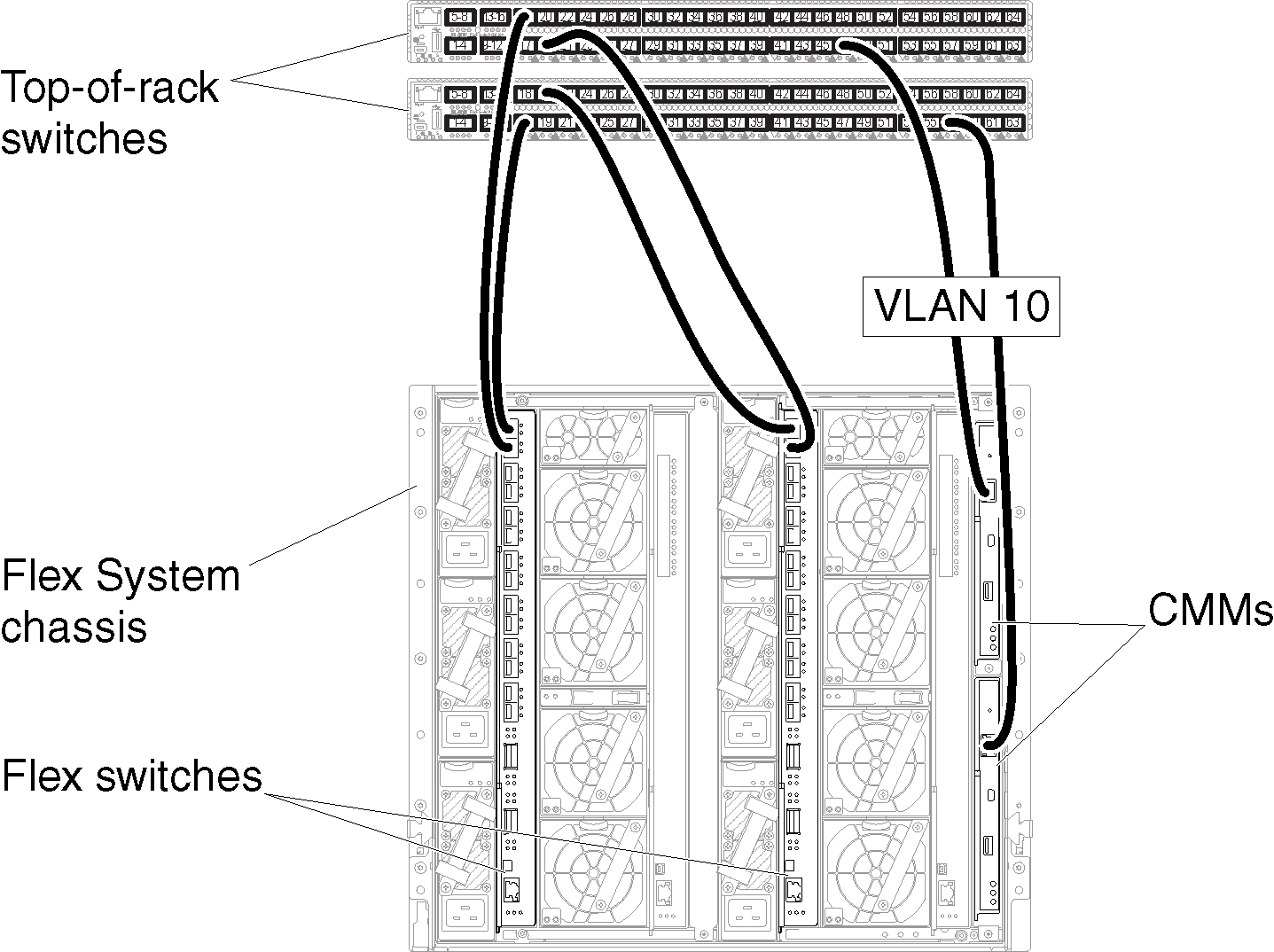Step 2: Configure top-of-rack switches
Configure the top-of-rack switches.
Before you begin
In addition to typical configuration requirements for top-of-rack switches, ensure that all appropriate ports are enabled, including the external ports to the rack servers and network.
You can implement VLAN tagging in the Flex switches or top-of-rack switches, depending on the needs and complexity of your environment. If you implement tagging from the top-of-rack switches, enable VLAN tagging from the top-of-rack switches.
Ensure that VLAN IDs are set up for the management and data networks.
Procedure
The configuration steps might vary, depending on the type of rack switches that are installed.
The following figure is an example scenario that illustrates VLAN tagging that is implemented in the top-of-rack switches and enabled on only the management network. The management VLAN is set up as VLAN 10.
In this scenario, you must define the ports to which the CMMs are connected as belonging to the management VLAN.

For information about configuring Lenovo top-of-rack switches, see Rack switches in the System x online documentation. If another top-of-rack switch is installed, see the documentation that came with that switch.